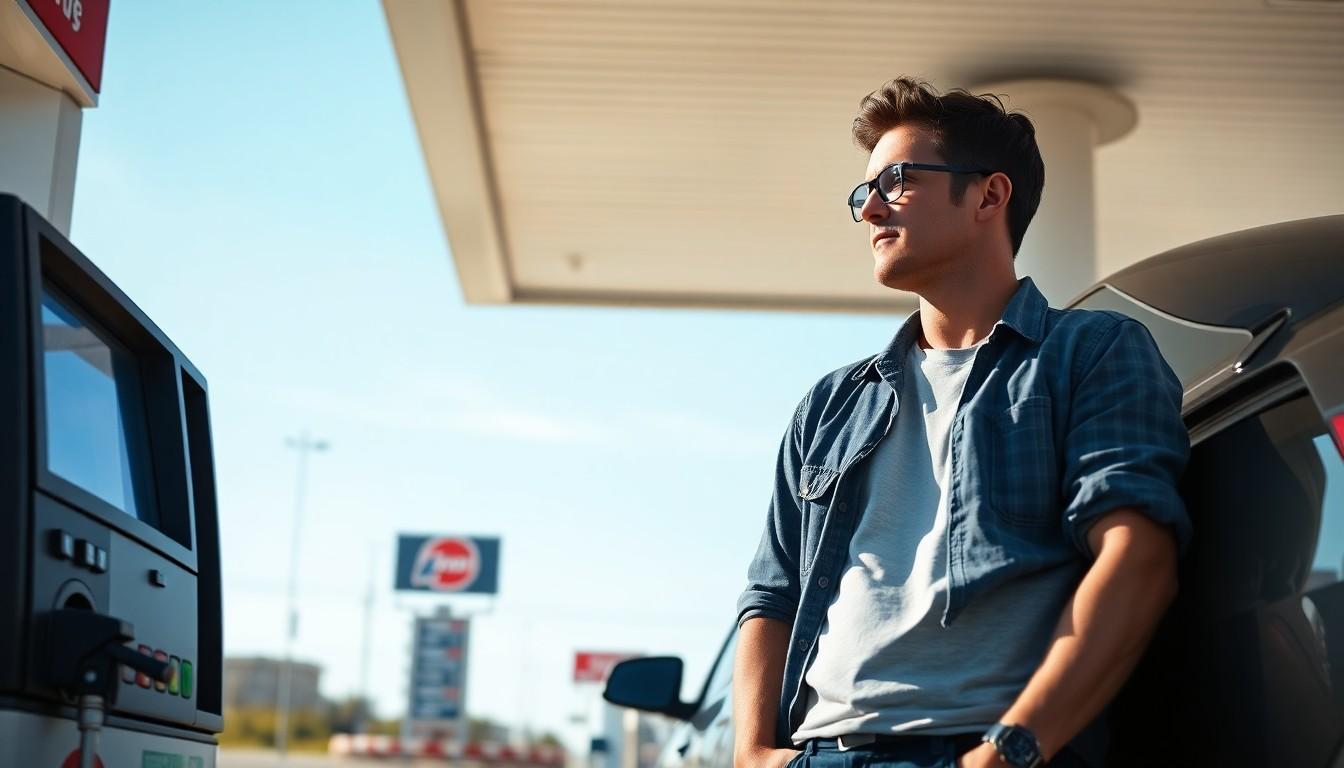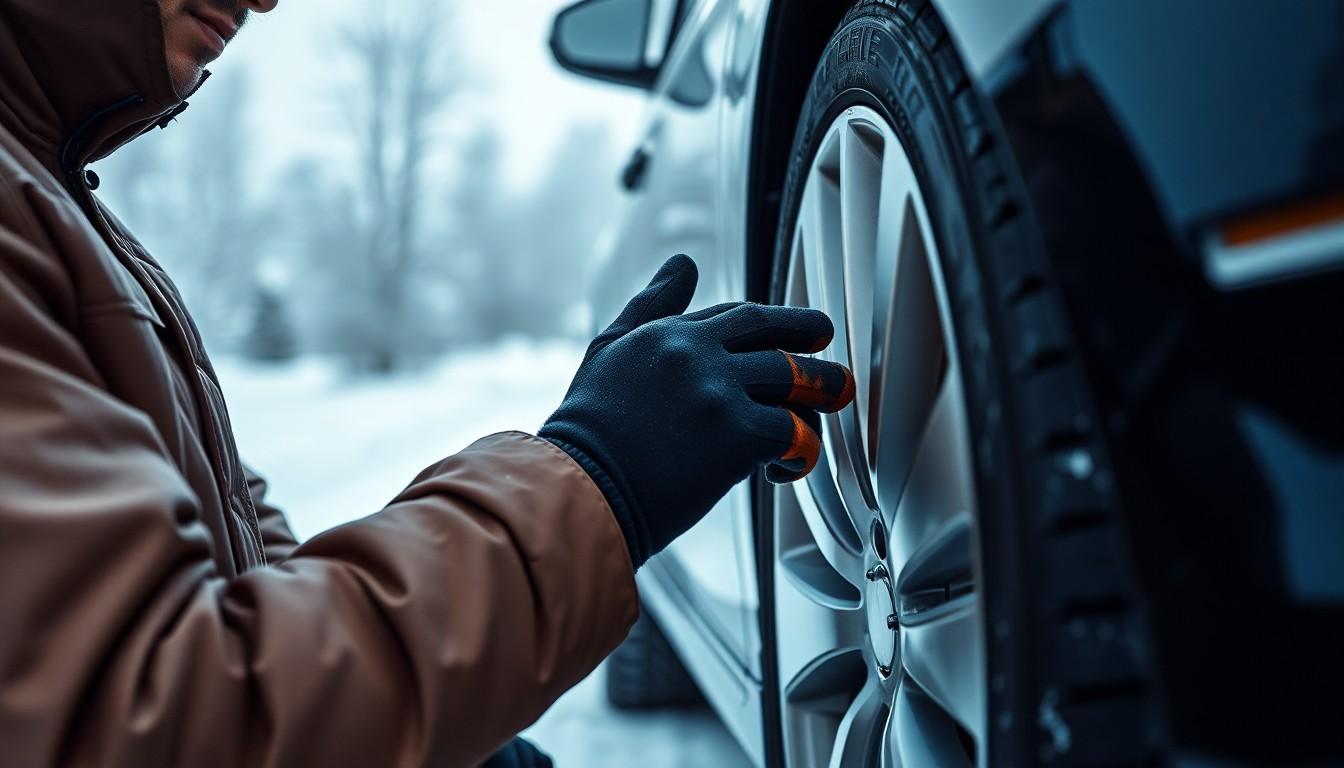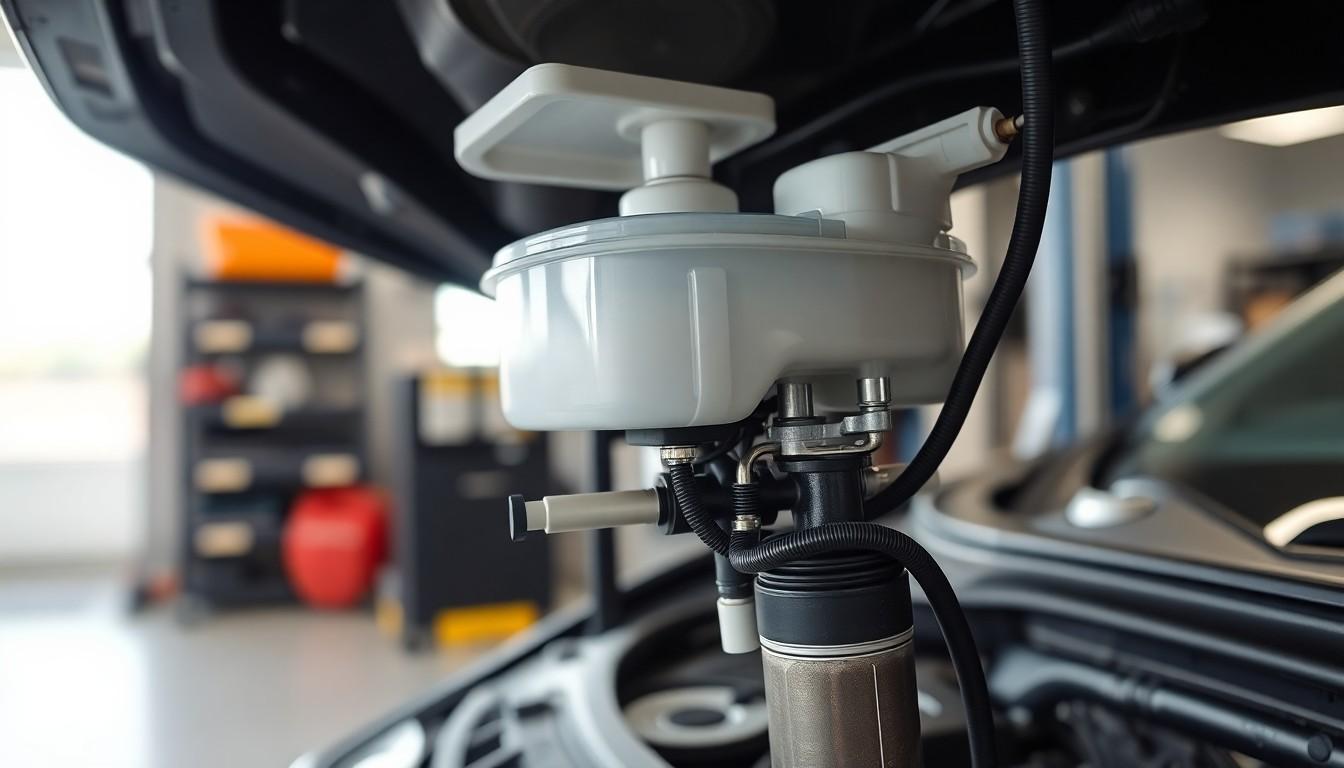Wondering when to fill up your gas tank? It’s a common question that can impact both your wallet and your peace of mind. Many of us have experienced that moment of anxiety when the fuel gauge dips toward empty and we’re left deciding whether to stop now or push our luck a little further.
We’ve researched the optimal times to refuel your vehicle to save you money and prevent those stressful situations. From understanding the ideal fuel level percentages to knowing the best days of the week for lower prices, making smart decisions about when to fill up can lead to important savings over time. Let’s explore the best strategies for keeping your tank—and your budget—in good shape.
Understanding Your Vehicle’s Fuel Gauge
Your car’s fuel gauge is more than just a basic indicator—it’s a vital tool for managing your gas consumption effectively. Understanding how it functions and what its warnings truly mean can help you make better decisions about when to refuel.
How Fuel Gauges Work
Most modern fuel gauges use a float mechanism connected to a sending unit that transmits electrical signals to your dashboard display. This system includes a float arm attached to a resistor that changes electrical resistance as the fuel level changes. When your tank is full, the float rises and sends a exact signal; as fuel depletes, the float lowers, altering the electrical resistance and changing your gauge reading. Interestingly, fuel gauges aren’t designed to be perfectly linear—they often move more slowly at the top half of the tank and accelerate as you approach empty, giving you extra warning time when fuel gets low.
The Truth About the Low Fuel Warning Light
The low fuel warning light typically activates when approximately 10-15% of your tank’s capacity remains, not when you’re completely out of gas. This reserve provides about 30-50 miles of driving distance depending on your vehicle’s make, model, and driving conditions. Many drivers mistakenly treat this warning as an immediate emergency, but it’s actually designed as an advance notice. Consistently driving with the light on, but, can damage your fuel pump since gasoline helps cool and lubricate this component. The sediment that collects at the bottom of your tank also poses a risk to your fuel system when levels get too low, potentially clogging filters and injectors over time.
The Ideal Time to Refill Your Gas Tank

Knowing when to refill your gas tank can save you money and protect your vehicle’s fuel system from damage. The timing of your refueling affects both your wallet and your car’s longevity, making it essential to develop good refueling habits.
The Quarter-Tank Rule
Refueling your vehicle when the gas tank reaches between a quarter and half full is the optimal practice for most drivers. This strategy ensures you have sufficient fuel for emergencies or unexpected supply chain disruptions. Following the quarter-tank rule aligns perfectly with maintaining your vehicle’s fuel system health, preventing potential issues before they arise. Many automotive experts recommend this approach as it strikes the ideal balance between convenience and vehicle maintenance.
Why Running on Empty Is Risky
Driving with very low fuel levels can cause important damage to your vehicle’s electric fuel pump and overall fuel system. Modern fuel pumps rely on gasoline in the tank for cooling, and when fuel levels drop too low, these pumps may overheat. The overheating frequently leads to pump failure, creating openings for contaminants to enter your fuel system. These contaminants then cause expensive repairs that could have been avoided with regular refueling. Also, sediment that naturally settles at the bottom of your fuel tank gets drawn into the system when fuel levels are extremely low, potentially clogging filters and injectors over time.
How Weather Affects Refueling Decisions

Weather conditions significantly impact when and how you should refuel your vehicle. Temperature fluctuations affect both your fuel and vehicle performance, making it important to adjust your refueling habits accordingly throughout the year.
Temperature and Gas Expansion
The common belief that purchasing gasoline in cooler morning temperatures gets you more fuel for your money stems from basic physics—gasoline expands when heated. Testing has revealed, but, that this difference is negligible in practice. Most gas stations store their fuel in underground tanks where temperature remains relatively constant regardless of outdoor conditions. As a result, the time of day you choose to fill up doesn’t meaningfully affect the amount of fuel you receive for your money.
Winter Considerations
Cold weather creates unique challenges for vehicle efficiency and fuel management. Tire pressure drops approximately 1-2 pounds for every 10-degree temperature decrease, requiring more frequent pressure checks during winter months. Properly inflated tires can improve your gas mileage by up to 3.3%, while underinflated tires waste fuel and reduce efficiency. During winter, maintaining optimal tire pressure becomes even more critical to maximize fuel economy when temperatures fluctuate dramatically between day and night.
Summer Fuel Management
Hot summer temperatures present different refueling considerations focused primarily on fuel evaporation rather than expansion. Driving with a near-empty tank during hot weather accelerates gasoline evaporation, effectively causing you to lose fuel to the atmosphere. Keeping your tank at least half-full during summer months minimizes evaporation and protects your fuel system. This practice not only preserves your fuel but also prevents your electric fuel pump from overheating, as the gasoline itself serves as a coolant for the pump mechanism.
Financial Aspects of Gas Tank Refilling

Understanding the financial implications of when and how you refuel can save you money over time. Smart refueling habits contribute not only to your vehicle’s health but also to your wallet’s well-being.
Price Fluctuations and Timing
Gas prices follow predictable patterns that savvy drivers can leverage for savings. Monday and Tuesday typically offer the lowest prices of the week, with costs gradually rising as the weekend approaches. This pattern occurs because gas stations often raise prices in anticipation of weekend travel. Seasonal variations also impact your fuel budget, with winter gas costing less than summer formulations. Winter gas contains butane, which reduces emissions in cold weather and makes the fuel more economical compared to summer blends. Daily fluctuations exist but rarely make enough difference to justify going out of your way for a fill-up on a exact day.
Does Filling Up Partially Save Money?
Partial fill-ups actually cost more money in the long run even though seeming economical in the moment. Frequent small refuels expose you to more price fluctuations, potentially catching you at higher price points more often. Complete fill-ups when prices are low (particularly on Mondays or Tuesdays) offer better protection against price increases. The optimal refueling strategy involves maintaining your tank between a quarter and half full. Letting fuel levels drop below a quarter tank risks sediment and debris entering the fuel pump, potentially leading to expensive repairs that far outweigh any perceived savings. The financial benefits of timing your refuels properly extend beyond immediate savings—they help avoid costly mechanical issues that result from poor fuel management practices.
Impact on Vehicle Performance and Longevity

Maintaining appropriate fuel levels in your gas tank directly affects your vehicle’s performance and long-term reliability. Low fuel levels can create a cascade of mechanical problems that extend far beyond simply running out of gas on the road.
Fuel Pump Health
The fuel pump’s lifespan depends significantly on how much fuel remains in your tank. Keeping your gas tank at least quarter-full ensures the fuel pump stays submerged in gasoline, which acts as both coolant and lubricant for this vital component. When fuel levels drop too low, the pump operates without proper cooling, causing it to overheat and potentially fail prematurely. Replacing a fuel pump typically costs $400-$600, making this an expensive repair that’s easily preventable with proper fueling habits. Electric fuel pumps in modern vehicles are particularly sensitive to heat damage and function optimally when completely immersed in fuel.
Sediment Buildup Concerns
Sediment and debris naturally settle at the bottom of your gas tank over time, creating a potential hazard for your fuel system. Driving with less than a quarter tank regularly forces your vehicle to draw fuel from the bottom of the tank, pulling these contaminants into the fuel line and filters. These particles can clog fuel injectors, damage the fuel pump, and reduce engine efficiency. Consistent low-fuel driving increases sediment circulation throughout your fuel system, leading to rough idling, reduced acceleration, and decreased fuel economy. Regular refueling before reaching the quarter-tank mark effectively prevents these sediments from entering your engine’s critical components.
Strategic Refueling for Road Trips

Road trips require thoughtful planning when it comes to refueling strategies. Efficient gas management can save both time and money while ensuring your journey remains smooth and enjoyable.
Routing and Gas Prices
Strategic route planning significantly impacts your fuel expenses during road trips. Filling up in states with lower gas taxes like Texas, Mississippi, and Louisiana can result in substantial savings compared to high-tax states such as California, Washington, or Oregon. Before departing, calculate your anticipated fuel costs based on your vehicle’s efficiency, total mileage, and the approximate amount of gas required for budgeting purposes. Timing your refueling stops during off-peak hours helps avoid congestion at gas stations, making your experience more pleasant and efficient.
Planning Ahead for Long Distances
Incorporating refueling stops into your route planning is essential for long-distance travel. Apps and online tools can identify optimal gas stations along your journey, particularly important for RVs or vehicles towing trailers. These tools help determine the best locations based on your vehicle’s fuel range, which depends on tank size, fuel efficiency, and any additional drag from towing. Sticking to major highways and interstates allows for more consistent driving speeds, improving overall fuel economy and reducing the frequency of refueling stops.
Emergency Fuel Situations
Proactive refueling prevents stressful roadside emergencies during your trip. Don’t wait until your fuel gauge reaches the red zone—it’s better to pay slightly more at an available station than risk breaking down in an unfamiliar or remote area. RVs and larger vehicles require special consideration when selecting appropriate refueling locations. Look for stations with ample space and suitable pump layouts, preferably with outside lanes or angled setups that accommodate your vehicle’s size and turning radius.
Conclusion
Filling your gas tank at the right time can save you money and protect your vehicle. We recommend following the quarter-tank rule for everyday driving and planning your refueling strategically during road trips.
Remember that your fuel gauge warnings provide valuable information but aren’t emergencies. By maintaining proper fuel levels you’ll avoid potential damage to your fuel pump and reduce the risk of being stranded.
Weather considerations play a minor role in fueling efficiency but shouldn’t drive your refueling schedule. Instead focus on consistent habits that keep your tank between a quarter and half full.
Smart refueling isn’t just about convenience—it’s a practical approach to vehicle maintenance and budget management that pays dividends over time.
Frequently Asked Questions
When should I refill my gas tank?
The ideal time to refill is when your tank reaches between a quarter and half full. This “quarter-tank rule” ensures you have enough fuel for emergencies while protecting your vehicle’s fuel system. Refueling at this level helps prevent damage to the electric fuel pump and avoids issues with sediment at the bottom of your tank.
How far can I drive when the low fuel warning light comes on?
When your low fuel warning light activates, you typically have about 10-15% of your tank remaining, which translates to approximately 30-50 miles of driving distance. However, this varies by vehicle model and driving conditions. It’s best not to rely on this reserve regularly, as it can lead to fuel system damage.
Does filling up in cold weather save money?
While temperature fluctuations do affect fuel density, the savings from filling up during cooler temperatures are negligible for the average driver. The difference is so minimal that it doesn’t justify planning your refueling schedule around temperature. Focus instead on finding stations with competitive pricing regardless of weather.
Is it bad to drive with the gas light on?
Yes, consistently driving with the gas light on can damage your vehicle. Low fuel levels can cause the fuel pump to overheat and fail prematurely. Additionally, sediment that settles at the bottom of your tank can be drawn into the fuel system when levels are low, potentially causing clogs and reduced efficiency.
What’s the best day of the week to buy gas?
Studies suggest that Monday and Tuesday tend to offer lower gas prices in many areas. Prices often rise toward the weekend as stations anticipate increased demand. However, local market conditions and global events can impact this pattern, so using gas price comparison apps can help you find the best deals regardless of the day.
How can I plan refueling stops for a road trip?
Plan your refueling stops strategically by researching gas prices along your route and targeting states with lower gas taxes. Use apps like GasBuddy or Waze to find the best-priced stations. For longer trips, incorporate refueling into your regular rest stops and always refuel before your tank drops below quarter-full to avoid emergency situations.
Does keeping my tank full improve fuel efficiency?
No, a full tank doesn’t directly improve miles per gallon. However, a fuller tank does reduce fuel evaporation, especially in hot weather. The weight of a full tank might slightly decrease efficiency in smaller vehicles, but this effect is minimal. The primary benefit of keeping your tank reasonably full is protecting your fuel pump, not improving efficiency.
How accurate are fuel gauges?
Fuel gauges aren’t perfectly linear. They typically show fuel depleting slower in the top half and faster in the bottom half. Modern vehicles use a float mechanism to measure fuel levels, which provides an approximation rather than a precise measurement. For accuracy, consider tracking your mileage between fill-ups to better understand your vehicle’s actual fuel consumption patterns.

